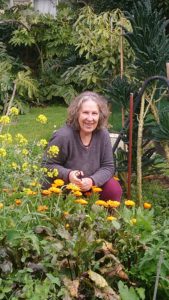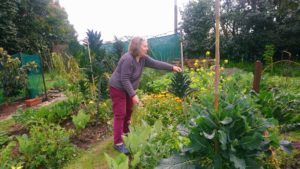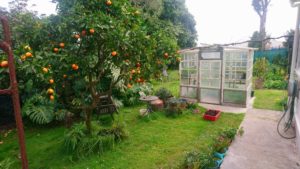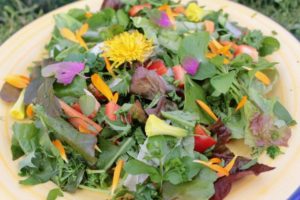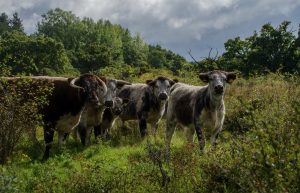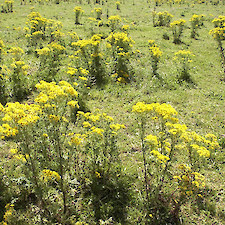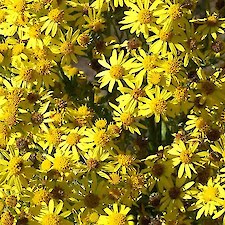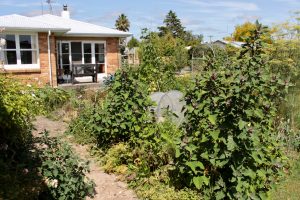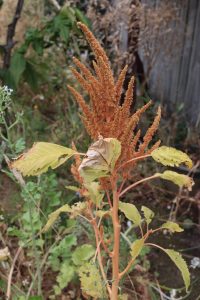Kaye is a very dear friend of mine who I met through edible weeds! I asked her if I could interview her to share with you how we first connected and what wild edibles mean in Kaye’s life.
How did we meet?
The truth of it is I saw a photo of you on your website and I decided I must meet you. Looking at your photo – I felt like we already knew each other – we just hadn’t met. It was such a surprise that you lived just across the valley and we could meet straightaway. I wrote an email and said “you don’t know me but let’s meet up. We’ve got lots in common”. A firm friendship began within days.
How did Julia’s edible weed workshop that you hosted at your
property change the way you view ‘weeds’?
I was already using weeds but in quite a haphazard way, using intuition and trial and error, not really sure what I was doing. You ran a workshop in my garden and so much clicked into place for me.
Did it change the way you garden
Well yes it did, because I was leaving big patches of weeds in amongst the veges just because I loved them. After meeting you, I realised weeds were going to be a major part of my food production and ultimately my healing, so I started deliberately cultivating them, moving them, keeping seeds.
Do you have a favourite ‘weed’ and if so what is it about that plant you like?
Hmmm. That’s a hard question. Some weeds I love just because of their name! Like Self Heal, and Speedwell and
Catsear. I love chickweed because I admire the way it
scrambles around the garden and I enjoy the taste and knowing it is so good for me. Nasturtium is my favourite flower and I am so happy to have found the magical Magenta Spreen!
How do you use your edible weeds
Mostly in smoothies, but also as salad greens. I hardly use conventional lettuce now. Sometimes I will mix them with olive oil to use topically, eg when I had goats I made calendula and comfrey ointment for comfrey ointment for mastitis. Also I always have jars of weed flowers in the house.
Have edible weeds had an impact on your life and or health?
A huge impact! I know for sure they have played a major role in my health journey, mainly in toxin removal and increasing nutrition. I could never go back now to pre-weed days. My life revolves around them now and I really love my daily harvesting routine.
What is your passion in life?
Actually I am passionate about storytelling and preserving old stories. I am known for telling stories about where a plant in my garden came from (eg ” I found these seeds in my aunt’s apron pocket when she died”). I remember at that first workshop, you shared some little anecdotes with us: Magenta spreen used as rouge, dandelion known as Piss the Bed, and I was instantly captivated because I could relate. I also love those old names like
Nipplewort, Oxtongue and Doves foot because I am interested in the folk history of how they got those names.
How do you make a living?
Because I am on the pension, my focus has gone from making a living, to living sustainably. My husband Chris and I grow nearly everything we eat – vegetables, fruit and of course weeds, mostly from seed and we now have time to preserve and freeze produce more than before. We swap and barter and give away a lot of veges and seeds. We are both very handy so we make most of what we need and re-use or repair rather than buy new.
Any other comments would be welcome
We have always been keen gardeners but we both feel much more connected to our garden now that we have a broader knowledge. We love sharing it with others and teaching people to include weeds in their diet. Thank you Julia! xx
